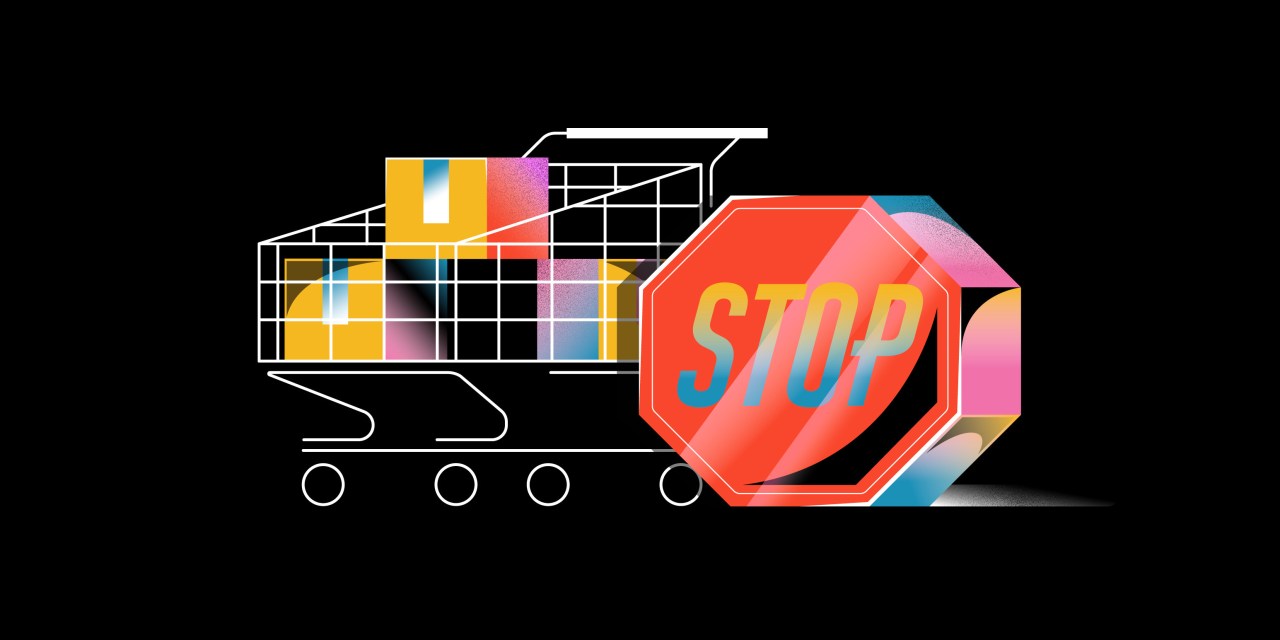In 2024, retail executives took action against rising shoplifting and violence in stores

According to Bob Larkin, shoplifting is only getting worse for retailers.
Larkin, the senior vice president of retail enterprise accounts for security services provider Allied Universal, said his clients — retailers at malls and shopping centers throughout North America — have watched shoplifting become more intense, and sometimes violent, over the past few years. He said those retailers are seeing larger groups of shoplifters come in the stores at the same time, sometimes as many as eight people, and that jewelry stores are more often seeing smash-and-grabs in the middle of the day.
“There was a time where somebody would come in, and they would be trying to steal one item in a fitting room,” Larkin said. “Now, what you see — and, listen, it’s on YouTube, and you see it on the news — it’s more of a group of people coming in and just grabbing merchandise in the middle of the day and running out of the store with it.” Some recent examples took place over the holidays. In December, 40 people were arrested for stealing almost $4,000 in merchandise from a Portland mall and shopping center, a Fox affiliate in Oregon reported. In Kansas, Lenexa police arrested 33 people for stealing more than $13,000 in stolen merchandise from areas surrounding a mall just before Christmas, according to KMBC 9.
In 2024, retailers sought out solutions to ramp up security while minimizing any impact on sales — both by ramping up traditional security measures and adopting new technology. What the year laid bare is that some of the most common tactics — like locking up merchandise and getting customers to flag down an employee to unlock it — haven’t cut it, and retailers are increasingly in search of other solutions.
Larkin said some retailers have asked for additional security guards in the stores or to bring in more off-duty police officers. Some, he said, requested a more tactical look for their security guards — for example, a bright yellow uniform as opposed to a black suit and white shirt — to be able to identify them more easily.
Retailers, including CVS and Walmart, have started testing ways for customers to open locked security cases with their phones, per reports this year. “This pilot is an example of how we’re applying technology as a possible solution and we’re eager to learn more about how it works and is received,” CVS spokesperson Amy Thibault told Retail Brew. In December, CNBC reported that some Walmart employees in Texas began wearing body cameras in a pilot program.
Larkin said his clients have also turned to RFID for information on what’s being stolen or lost and where — whether it be in the supply chain, store or at the point of sale — as well as miniature GPS units help track products and aid law enforcement.
“Retailers want to look at what are the ways now that they can deter the criminals from committing the crimes, reduce the amount of violence, but not create the friction for an everyday, legitimate customer,” Johnston said.
Many of these new solutions can often decrease sales or make customers unhappy. With locked cases, it may take too long for employees to arrive to unlock them, and frustrated shoppers may turn to online shopping instead. More than a quarter of 5,000 shoppers surveyed by research firm Numerator said a retailer loses their purchase when items are locked up, according to a report published Nov. 4.
Walgreens serves as a cautionary tale about how companies can risk responding too drastically to the threat of shoplifting. During an earnings call last year, Walgreens finance chief James Kehoe admitted ”maybe we cried too much” about merchandising losses due to shrink, and admitted the company had perhaps too much security in stores.
Larkin said some clients have implemented body cameras as the devices have become smaller, but there are privacy and liability concerns about who owns the data.
In a survey conducted last summer, the NRF and the Loss Prevention Research Council asked loss prevention and security executives about retail theft and violence. Eighty-four percent said violence occurring during crimes like shoplifting had become more of a concern in 2023 than in 2022. The survey also found that the average number of shoplifting incidents increased by 26%, and a majority of respondents said organized retail crime and shoplifting had become more of a concern.
“The level [of theft and violence] we’re seeing today is far greater than what retailers have ever experienced before,” David Johnston, vp of asset protection and retail operations for the National Retail Federation, told Modern Retail.
The NRF’s survey found that the majority of surveyed retail loss prevention and security executives also added or planned to add measures to lock up or secure merchandise from theft. Johnston said while retailers are concerned about their own shrink levels, violence prevention is also a top priority.
“[Retailers] are very much concerned about the violence and the theft because that impacts morale, hiring, retaining employees, customers shopping in your store and then somewhere down that line, the profitability of a company,” Johnston said.

